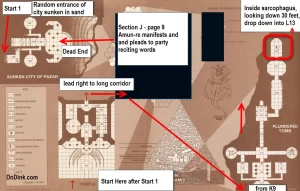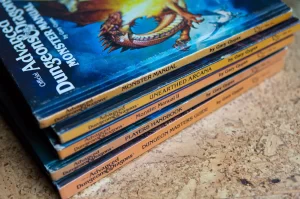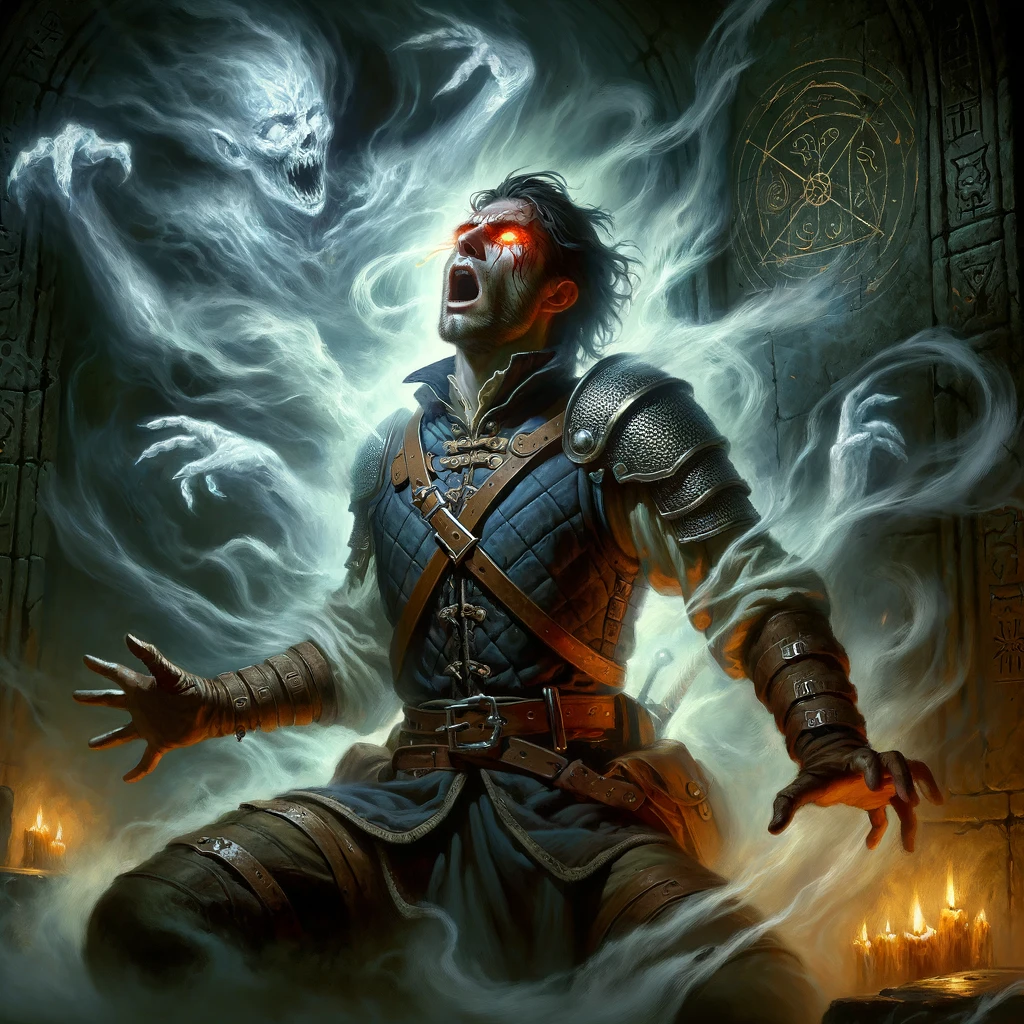
Demon and Possession
Possession and can really liven things up for a party of Lawfuls who are getting along in a dungeon. That is the ability of a demon to take charge of the body and mind of lesser mortals - player characters - and it's one hell of a ride when it happens. Pun!
What demons can possess? The rule of the thumb is that only those demons that are immune to all but magical weapons (which is up to DM) and therefore exist upon two planes at once may possess. The corporeal body of the demon is sent to another plane while the spiritual essence remains in a room, cave, dungeon hall or other area. The amulet of the demon must remain on the plane and world in which the possession takes place.
It need not be in the same room but must remain within one mile of the place of possession. Although the demon should be placed by the DM, the member of the party affected should be at random (First person into the room, last person, fourth person or whatever) so that any member of the party may be the victim and to preserve fair play.
Once player character, victim of the possession, has been decided, all members of the party to enter the room are told that they feel a depressing, unnerving, else an oppressive presence in the room and are asked to roll the dice for a saving throws against a DC DM decides if not stated elsewhere (stat blocks of demon).
If upon his turn the victim does not make a save throw, that character is possessed. Paladins and Clerics get a +2 on saving throws and demon princes causes a -2 for them on their save throws. If the save is made no one in the party is possessed. Only one demon will inhabit a body at one time and only one member will be possessed in one party at one time.
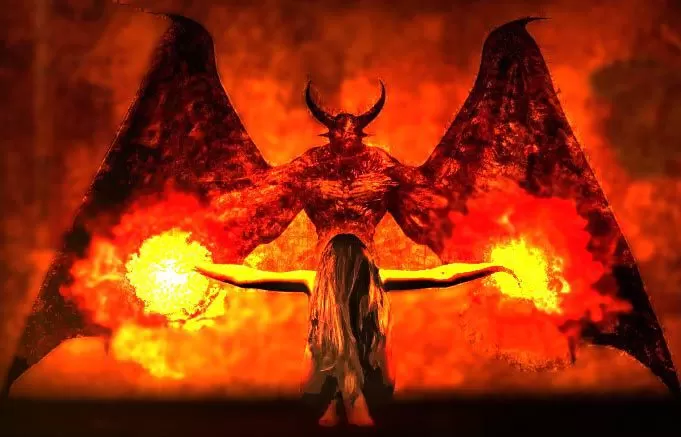
Party Member Possessed
The possessed member of the party has the same armor class as before possession. The possessed character may use any weapon except those aligned Lawful, regardless of previous character class. They attack with the weapons as whatever level demon they are rather than the level of the victim. The demon, while in possession, retains all of his powers except for the ability to gate. Naturally, the demon may not do things that are precluded by his new shape; no physical flight without wings or no Balrog immolation. The possessed character has it's hit points and not the demon's hit points, so all hits and damage that is taken by the infested body rather than the demon itself.
The possessed character will either fight to the death or continue with the party, feeling no effect until the possessing demon chooses to take control. Either way, the possessed person will register on Detect Evil or will react violently to Holy Water (though there is little reaction to the presence of a holy symbol). Paladins and Rangers with their power to detect evil, will recognize possession immediately. If detected the possessing demon will attack.
One of the first actions of the victims that may give away their presence is that they divest themselves of all aligned weapons or equipment. The victims will lose any hit points to an alignment shock, yet they will feel intense pain in the presence of lawful.
Restraint of the demon possessed individual is almost impossible. They are able to break all rope and leather restraints and all but the strongest chains. They may be subdued only by two or more fighters with a strength of at least 18 or possibly by spell (DM decides). And demon princes may not be subdued.
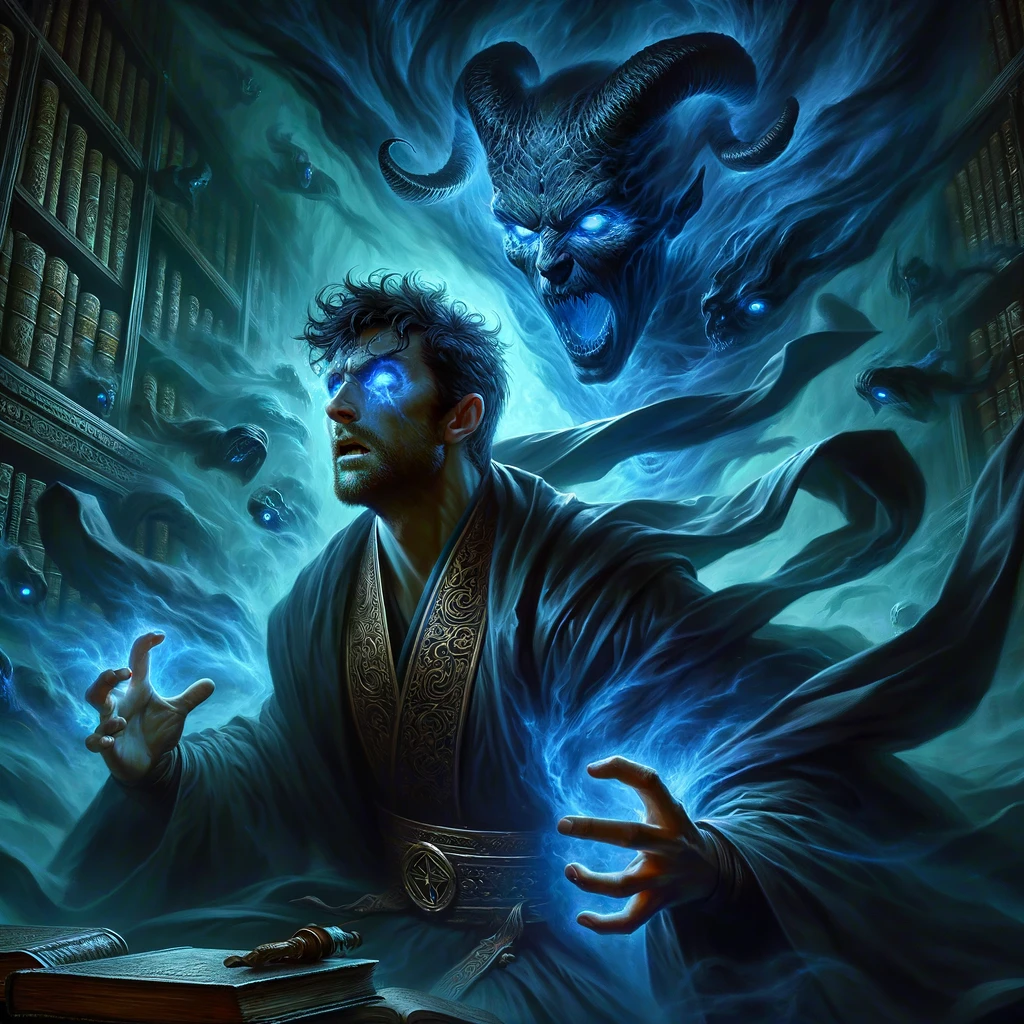
The Host
As the host body breathes its last, a chilling moment of metaphysical reckoning awaits. A demon within may seize the opportunity-a harrowing 35% chance-to infiltrate the very soul of the one who delivered the fatal blow. Exceptions to this dread possibility are those of unshakable virtue: Lawful clerics and paladins who are immune to such malevolent transfers. The difficulty of resisting this dark possession falls within the domain of the Dungeon Master's discretion, encapsulated in the nebulous Save DC.
Should the demon forsake the sinister gamble of possession, or if the intended victim manages to thwart the possession with a successful saving throw against the DM-determined DC, then the demonic entity faces a trifecta of shadowy fates, each balanced on a knife's edge with a 33% likelihood.
First, it may opt to linger as an ethereal phantom, withholding its spectral claws and lurid gaze, neither attacking nor retreating-an ominous presence haunting the room like a malevolent fog.
Second, it could whisk its spirit away to the realm where its corporeal form resides, ensconcing itself in the safety of its home plane, possibly plotting its next nefarious venture. Third, it may rend the veil between dimensions, pulling its tangible body into the very chamber it occupied, resuming its unholy combat with renewed, and perhaps even more ferocious, zeal.
Each possibility, a door to unimaginable horrors or brief respites, holds the tension of the room in a grip as cold as death itself.
If the victim is raised after this death, there is a slight (10%) chance of the demon repossessing the body after the applicable save throw vs DC is attempted.
The Exorcist Exorcism
Every 6 rounds (with two rounds of preparation that involves no fighting for the cleric) a cleric may attempt to exorcise the demon. The ability to exorcise is in direct proportion to their ability to turn undead. If turn-away is indicated, the demon is expelled and reacts as if the body was killed except for further attempts as possession. If dispel is indicated, the demon is expelled and banished to the plane upon which his corporeal body rests. If the demon is driven from the body in this manner, there can be no repossession.
If the amulet of the prince or demon is found they may be ordered to return to its body on whatever plane it is lodged and leave the victim unhurt. This may be done and the amulet discarded without any of the attendant dangers of using a demon's amulet.
Remove curse or Wish can occasionally work an exorcism but the demon gets a saving throw against DC 17. Princes get a +2 on these this type of save throws (against remove curse and wish spells).
The Tormented Soul
In the shadow-laden realm of exorcism, the ordeal wreaks gut-wrenching torment upon both the cleric and the tormented soul they seek to save. Even before the chilling ritual can begin, the cleric must first endure two rounds devoid of combat-a fleeting but harrowing pause in the storm, giving space for unspeakable dread to creep in. Each plunge into this chilling rite exacts a fearsome toll, draining the cleric of a soul-rending 1d6 hit points, as if the abyss itself reaches out to claw at their very essence.
As for the victim, shackled to the precipice between mortal reality and infernal nightmare, their fate can splinter into one of three dark pathways. First, they may find a tortuous form of liberation, their spirit wrenched free at the agonizing cost of 1d10 points of damage-a searing burn scalding the soul. Second, the specter of madness lurks, a grim 35% chance that their mind shatters into a cacophony of shrieking lunacy, forever lost in a maze of torment.
Third, the cold hand of death reaches out with a chilling 20% probability, snuffing out their mortal coil as swiftly as a candle in the wind. Even then, a glimmer of hope flickers in the dark; an attempt at revival could beckon the departed soul back from the abyss.
Yet, a singular, razor-thin sliver of hope cuts through the stygian dark. Should the demon be expelled through the meticulously precise usage of its binding amulet-and only if the incantation is enunciated with flawless articulation-then, and only then, the victim may emerge from the depths of their own personal hell unscathed, the exorcism leaving no trace of its searing passage.
Consider reading about The State of Misery in The Abyss



